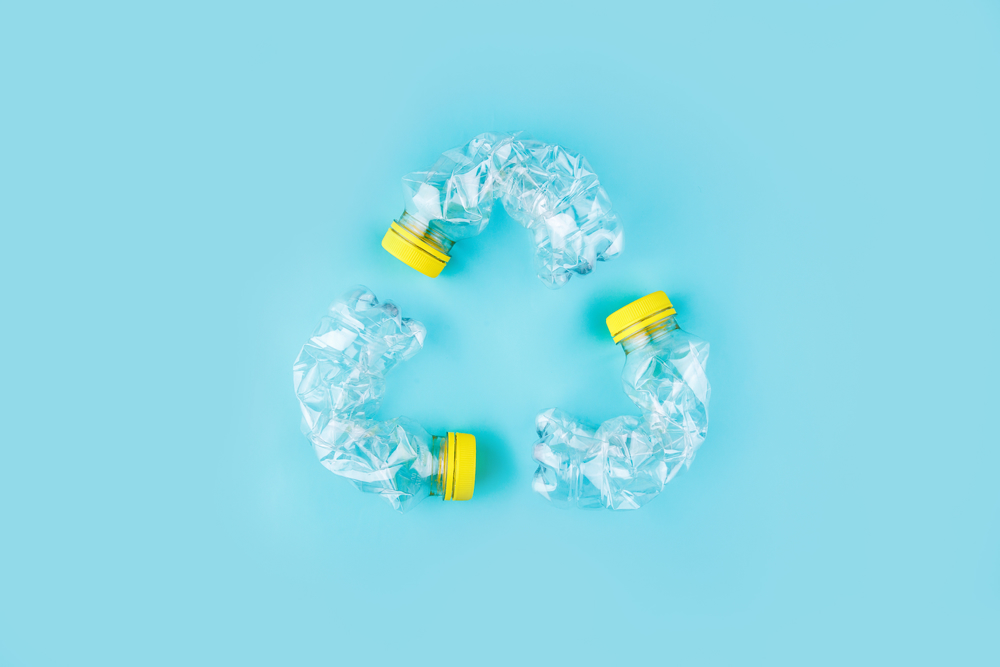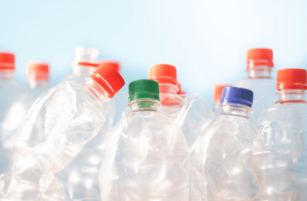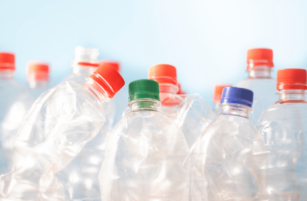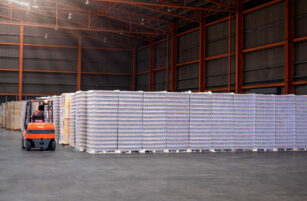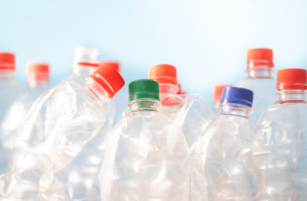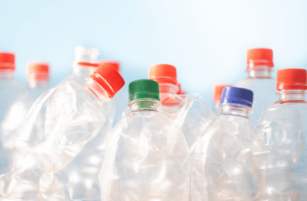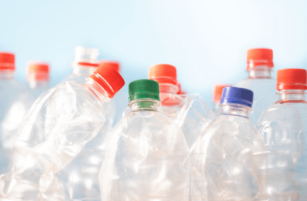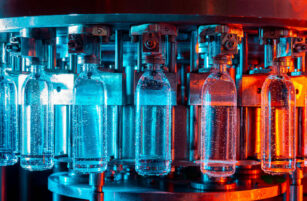- Europe is ramping up its efforts to improve recycling and collection rates.
- By 2025, the EU Single-Use Plastic directive is targeting an average collection rate of 75%.
- Continued anti-plastic sentiment could also lead to further tax introductions and product reformulation.
This Month’s Top Trends
1. Europe Accelerates Investment in Recycling and Collection
2025 is a big year for the European packaging sector, and it’s getting ever closer. By 2025, the EU Single-Use Plastic directive is targeting an average collection rate of 75%, and a minimum recycled content of 25%. Many multi-national brands have gone further in setting more ambitious targets. Amongst these, Coca-Cola Europacific Partners has set a target of 50% recycled content by 2025.
To supply the rapid growth in demand, Europe’s witnessing a much-needed acceleration in investment in recycling and collection infrastructure within Europe.
New deposit return schemes are set to boost collection rates in Slovakia and the UK. This month, Slovakia became the first country in Central Europe and only the eighth in the EU to introduce a deposit system of this kind. Scotland has also announced that the UK’s first deposit return scheme (DRS) will go live on 16th August 2023.
Investment in food-grade PET production is also seeing expansion, most recently with the announcement of Başatlı’s new bottle-to-bottle recycling project in Turkey, targeting production in April 2022. Whilst, within the EU itself, Plastpak is constructing a new food-grade RPET facility (20,000 kta) in Spain, due to commence production in the summer of 2022.
Implications
Europe is suffering from a shortage in food grade RPET supply, so investment in recycling and collection infrastructure is much needed to reach mandates and commitments. New plastic taxes could also exacerbate supply concerns.
To achieve a 75% collection rate for PET beverage bottles by 2025, around 60% more material would need to be collected compared to volumes in 2019. At present, Europe has an average PET bottle collection rate of 64%. Although time is looking increasingly short, DRSs are proven to significantly boost collection rates.
More DRSs are planned for 2022, including in Malta, Ireland, the Netherlands, Portugal, Latvia, Romania. Others in Greece and the UK are expected to be rolled out in 2023.
In many ways, whilst collection rates may come close to target, the bottleneck is likely to be shifted to production capacity. However, as is the case with virgin resin, we may need to look to the peripheries of Europe for new supply opportunities.
2. Plastic Taxes to Hit in 2022
The UK, Italy, and Spain are all planning on introducing plastic packaging taxes, and with the introduction of last year’s EU plastic tax as a national budget contribution, it seems clear that these policies are the first of many.
In brief, the UK’s new 200 GBP/mt plastic tax for packaging with less than 30% recycled plastic will take effect from April 2022. The tax will apply to plastic packaging produced in/or imported into the UK that does not contain at least 30% recycled plastic.
Spain has also proposed a plastic tax of 0.45 EUR/kg to be levied on non-reusable plastic packaging. Although the proposed bill has faced several delays due to the pandemic, it should be introduced in early 2022. It is currently unclear whether products with a certain percentage of recycled content will be exempt, but this looks likely.
Similarly, despite Italy’s plastic tax law being passed back in 2019, implementation has once again been delayed until 2023 under the next budget. Much like the Spanish tax, the amount of the tax is set at 0.45 EUR/kg, and is aimed at a wide range of single use plastic packaging, including plates, preforms, bottles, caps, containers, lids, bags, packaging, films, foils etc. Products made with a minimum of 30% recycled content are exempt from this tax.
Other European countries, including the Netherlands, are also looking at their own plastic taxes to recoup their share of the EU-wide plastic budget contribution, at least partially.
Implications
In most cases, the primary objective of these plastic taxes is to force a move from virgin to recycled content. Within the UK, the arrival of the new tax April 2022 has brought about a rush to source recycled material creating supply constraints. Similarly, once introduced in Italy and Spain, RPET supply within these countries will likely be severely stretched.
With food-grade RPET pellets selling at close to a 1,000 EUR/mt over virgin resin, taxes of 450 EUR/mt, or 200 GBP/mt in the case of the UK, may not be high enough to incentivise certain producers to make the switch from virgin material. Those lacking the public exposure of large multinational brands could back off from grandiose commitments, and pocket substantial savings in the process.
3. Will the Post-Pandemic Events Boom Go Plastic-Free?
Having been decimated by COVID-19, the events industry is expecting a post-pandemic boom in 2022. Despite the recent Omicron outbreak, all hopes are that 2022 will see consumer trends edge closer to pre-pandemic levels.
Many large music festivals, concerts, and running events for 2022 have already sold out at an astounding pace as pent-up demand is unleashed.
But what does this mean for beverage and associated plastic packaging consumption? Even before the pandemic many events were beginning to use sustainability are a key marketing ploy, focusing largely on being ‘plastic-free’.
Last month, the city of Miami Beach announced their intention to end a long-standing contract with Coca-Cola, rejecting a $4 million 10-year sponsorship deal with the soft drink company. Negotiations hit a roadblock because of all the plastic packaging that came attached to the contract. Wishing to go plastic-free, the city of Miami Beach and local music event organisers are looking for alternative arrangements.
Implications
Given the continued growth in anti-plastic sentiment since 2019, the restarting of the events industry may reveal a certain degree of plastic demand destruction that had otherwise been masked by the pandemic.
In 2019, more than 60 British music festivals pledged to go plastic free by 2021, including Glastonbury music festival, which attracts over 200,000 people and consumes over 1.3m plastic bottles. Other major European festivals made similar plastic-free pledges before the pandemic.
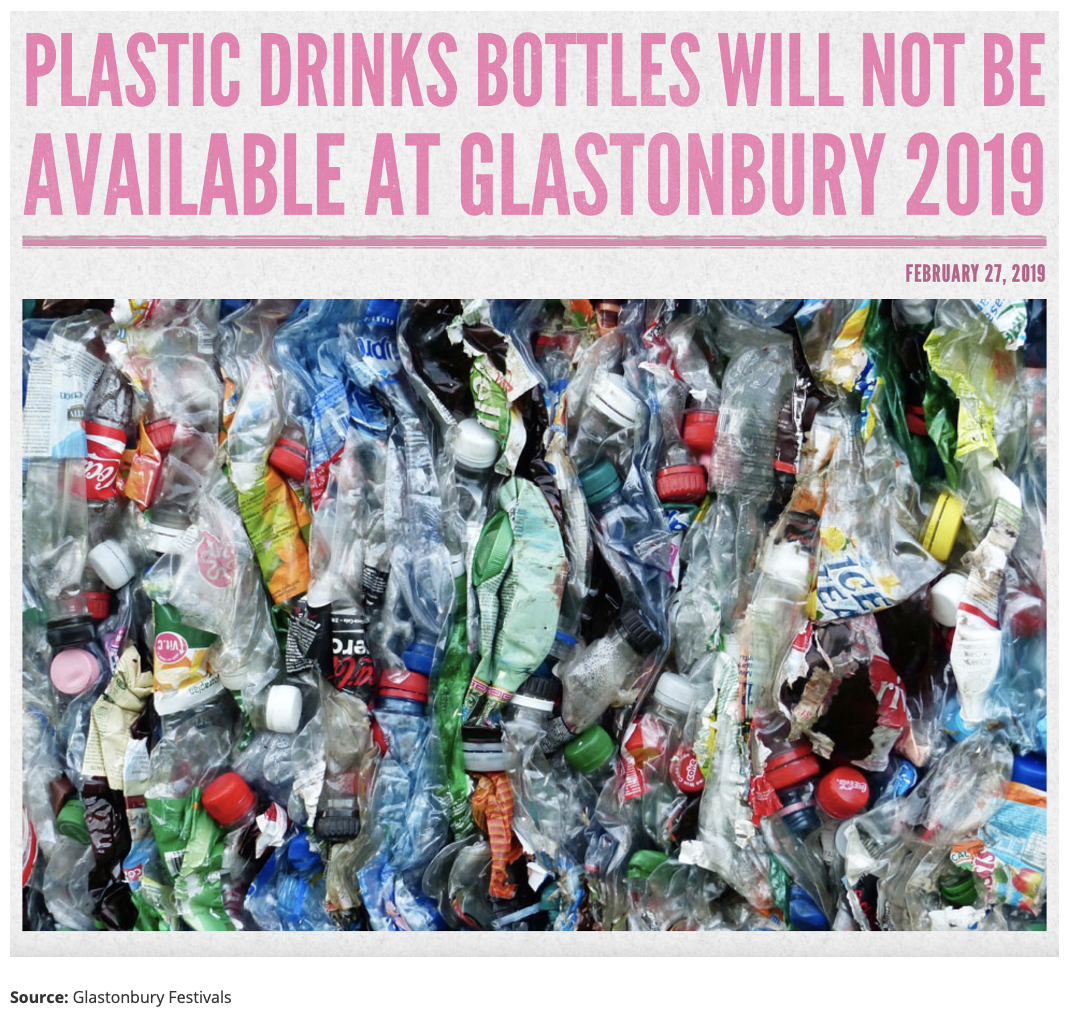
Will they pick up from where they left off or look to recover loss revenue following the pandemic? Check back for the full article on this topic later this month.
4. Shrinking Labels to Improve Recyclability
From this month, all 500ml Ribena bottles manufactured in the UK and Ireland will use a new simplified bottle design. Lucozade Sport, also part of the Suntory Beverage and Food GB&I group alongside Ribena, also introduced a similar reduced plastic sleeve at the end of 2021.
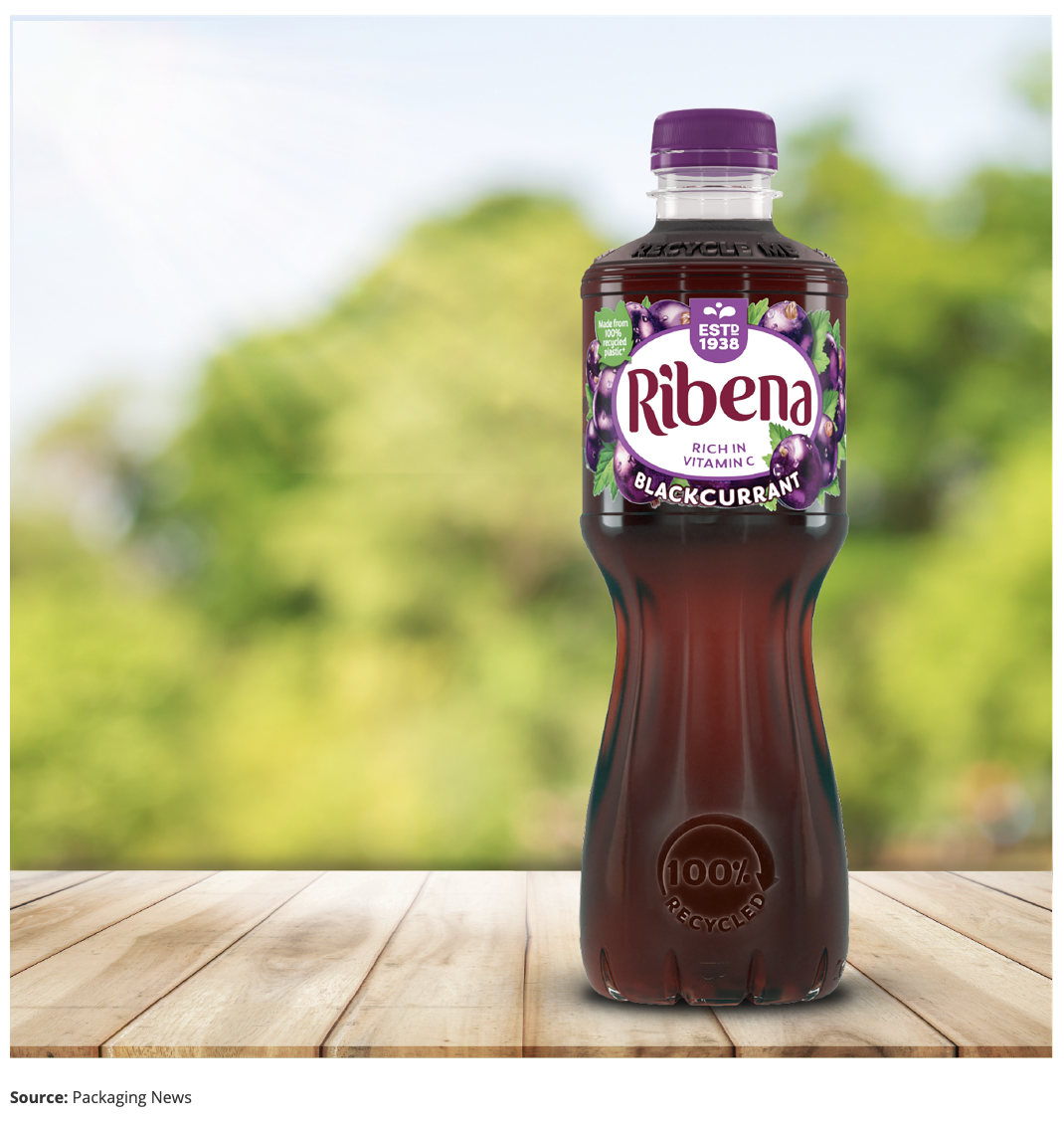
Both products previously had long sleeve labels covering the entire bottle, making them difficult to detect with sorting technology. Although not eliminated entirely, the new bottle labels are substantially smaller than the originals and the company estimates will reduce plastic use by around 1,200 tonnes per year.
Other brands have taken redesigns a step further and removed labels entirely from their bottles. This trend is particularly apparent within certain Asian markets.
In November 2021, Coca-Cola launched its first-ever label-less PET bottles in South Korea called Coca-Cola Contour Label Free. The move was made to align with the national government’s mandate to enhance plastic bottle recyclability by eradicating labels on plastic bottles.
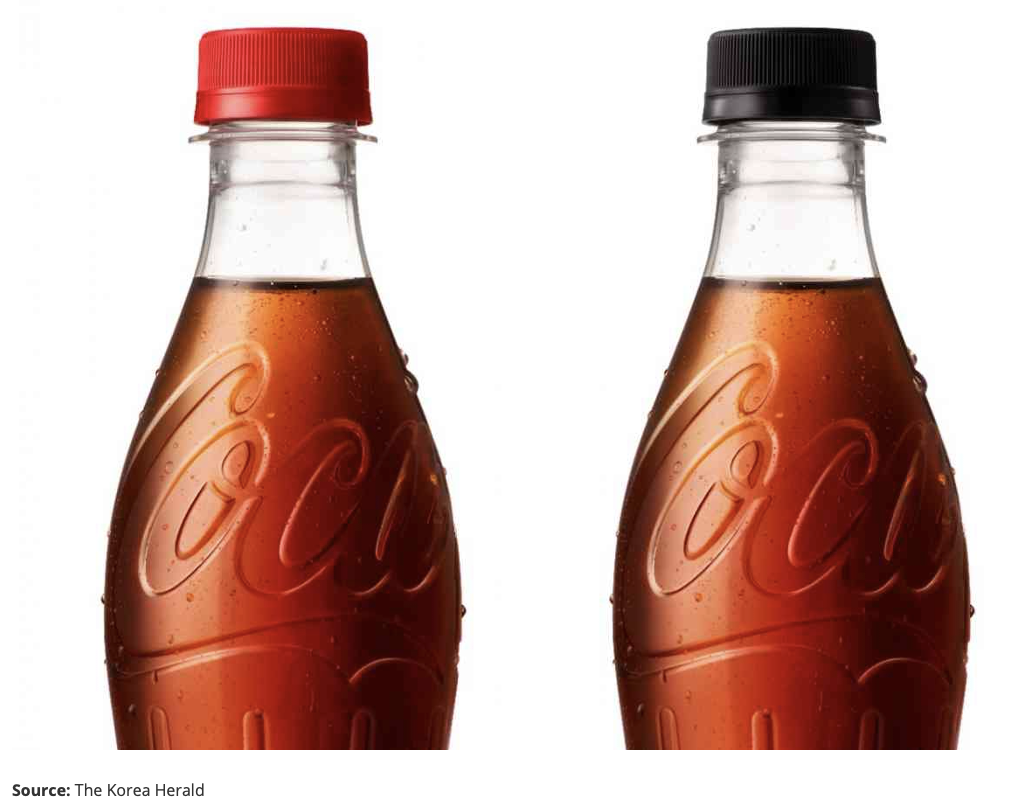
Similar moves were made across the Korean retail space through 2021. Outside of Korea, Coca-Cola also developed label-free bottles for other products with both the Hong Kong and Japanese markets.
Danone has also been involved in label-free designs in both the European and Latin American markets. Earlier in 2021, Danone launched a new bottle for its water brand, Evian, with an engraved logo. Whilst Danone also announced in 2021 redesigned labelless bottles for its Latin American brands, Bonafont and Villavicencio, in the Brazil and Argentina markets.
Implications
Enhancing recyclability and improving bale quality will continue to be key themes in 2022. Enabling better sorting of bottles as well as the easier removal of labels will help improve recycling yields that have been declining in some regions.
One of the advantages of PET is its versatility in moulding and design. Even in the absence of a traditional label, companies can effectively market a product through unique bottle designs, whilst showcasing the liquid contents more clearly.
The Korean market may become a test bed for a label-free marketplace, a concept that may prove transferrable to other markets, particularly for beverage multi-packs in Europe and Latin America.
5. Are Subsidies Needed to Improve Bale Quality in Europe?
Last month, California officials announced that they’ll provide incentive payments of up to 180 USD/mt to recycling facilities that limit contamination in PET bales to 2% or less. According to RecyclingMarkets.net, the current nationwide average price for PET bales is about 366 USD/mt.
The California Department of Resources Recycling and Recovery (CalRecycle) was authorized by lawmakers to provide up to $10 million in Quality Incentive Payments (QIPs) to recycling facilities producing ultra-clean PET bales this year.

California’s move comes as recent data released by CalRecycle showed that many large beverage producers were expected to fall short of state recycled-content mandates, such as those coming into effect in California and Washington State in 2022.
Implications
Bale quality is not only of significant concern within North America but also Europe. Since 2010, European PET reclaimers have seen their average bale yield decrease from 73% to below 50%.
PET bale yields have been dropping throughout 2021. According to industry reports, Spanish yields are now around 40-45%, with UK yields estimated to be around 50%. In practical terms, this means recyclers must buy twice the number of bales to get the same weight of usable material.
Subsidies could act as a much-needed catalyst to improving bale quality within Europe. However, any change must also go hand-in-hand with better PET tray and film recycling efforts, which are a contributing factor to reduced bale quality.
Other Insights That May Interest You…
Explainers That May Interest You…
